Contains major spoilers for Resident Evil 2: remake
One of the most remarkable things about Resident Evil 2: Remake is how it encapsulates the spirit of the original in terrifying realism. From the opening, I found myself drawn into the world of Leon Kennedy and Claire Redfield and that emersion carried me through the stories, even with the teleporting zombies and the heavy steps of my nemesis, the Tyrant Mr X. I know one thing for sure, this is not a game I ever wish to experience in VR. In fact, I can categorically say I will not even attempt it.
Resident Evil 2: remake, like the original, takes place in the quasi-gothic stylized Raccoon Police station. A place that not only is extremely creepy but also feels lived in. It is a true recreation of the original game, but one that ultimately feels real, and by that caveat, simply terrifying. In my first forage into the main hall of the Racoon City Police station, I was struck by the fallen grandeur, the little details that whispered of a struggle for survival that ultimately failed. Looking around that hall, the sense of abandonment was palpable. trolley beds, immediately recognisable as those found in hospitals, complete with open privacy drapes are splattered with blood now relegated to corners pilled with refuge.
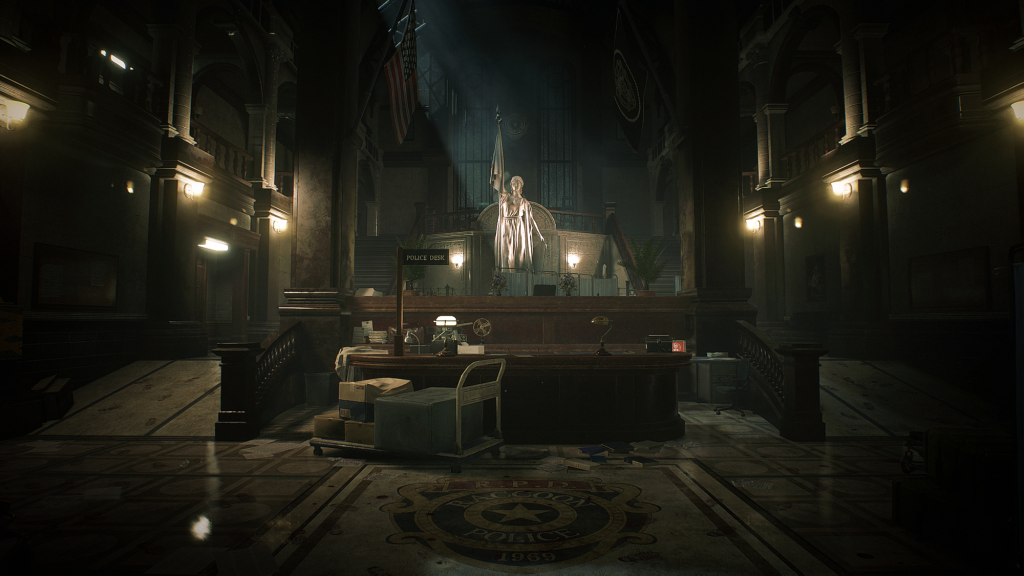
Shutters were down, adorned with an ominous danger – keep out, is a foreboding sight in what should be a bastion of safety. On the opposite side, the control box for a shutter that led to some sort of waiting room had been literally taped shut, as though the occupants had forsaken both sides of the building. Doors that would have once led to offices and other rooms were locked, their faces emblazoned with symbols I knew would mean a hunt for specific keys. Towering above it all, illuminated by moonlight that poured through the domed ceiling was an elegant statue of the goddess. She is a classical, pseudo greek figure that resembles justice, though bereft of her balancing scales and instead poised for battle with her flag. On second thoughts, she could resemble Britainia of Britain, stripped of her ability to defend, hinting at that terrible realisation within all zombie works. No matter how hard you try, they will always get in eventually, there is no negotiation with the hordes of the dead. She regards her bloodied domain ready for battle, mutely screaming outrage at its defilement. As I took those first tentative steps, amongst the ominous blood patches that besmirched its gleaming white facade, rendering any promise of sanctuary inert. I began to wonder as is my won’t, what sequence of events had led to this moment. The promise of aid that had been heard on our approach into the city had turned to ash and for all intents and purposes, any survivors had long since fled or perished. The tense thrum of the accompanying score is foreboding and I realised this was only the beginning.
As I progressed through the story, my first attempt at reaching a survivor, Elliot, a police officer who was trapped behind a shutter elsewhere, and claims, desperately at the CCTV camera’s, that he has found a way out, is ultimately doomed. Diving into the deserted, and desecrated hallways of the eastern shuttered area, the first thing I notice is the dark, the second the ominous streaks of blood that mutely tell us of a massacre. The floor is slightly flooded, my footsteps making a terribly forboding squelch as I progress. One of the first doors I come across is barred, something that becomes a regular occurrence. Slowly creeping in the dark, I begin to feel utterly alone and all the while I wonder, what happened to this place? How or why was it abandoned? Luckily, there are no inhabitants here, undead or otherwise, so I progress onward. Little details stick out, a missing electrical part, the reason the shutter wouldn’t open fully. Passages which should have been open, have been barricaded with chairs, apparatus and other furniture. Despite the blood that cakes everything, there are no bodies. I find myself wondering where they went? but for now, I am relieved I have no adversary to face. The darkness of this place, and the tight passages are suffocating. I finally make my way into what was once a press room. The furniture is disturbed, a bloody mark streaks the floor and I finally see a body, it is still and unmoving… until I get too near or disturb it by turning on the lights. After dispatching my foe, and collecting the remnant of supplies that are in the room I press on, Officer Elliot is waiting, and time is running short, though the game doesn’t indicate this. I finally reach the room and hear his desperate screams as he pounds against the shutter. “Open up. let me in” I wonder, how is it you got yourself into this mess? Why were you even out here alone? Leon or Claire, it matters not which, heave the shutter partially open, and try to pull Elliot through, the attempt is futile, he is torn asunder, his entrails strewn through the part open shutter. As he dies, he mentions Marvyn and shows his notepad, which may contain a clue to freedom. Later on, after I have uncovered his secret escape route, I will return to this area, to meet him as one of the undead. But that is then, and for now, I am oblivious to his fate. As I turn to leave another zombie crashes through the door, dressed in the uniform of the police, once a symbol of protection for the vulnerable, now, a mindless walking danger. I make a hasty retreat, and fight my way through a horde of undead that seems to have appeared from nowhere – this is one of the things that breaks immersion but is a payoff for the sense of safety that had built up. For in my foolish pride, I had assumed these halls as clear as when I had passed through, now not only is my back against a wall, but they are coming, and in this dark, tight place, there is little room to run. Killing them seems like an option, but it is a dangerous one, they take many bullets to kill, and my supplies are already running low. Later I would learn that it is far better to relieve them of their limbs than try to kill them outright. In this game, the undead truly feel undead. My return to the Main hall is met with surprise, I am caught as I try to belly slide under the shutter, luckily Marvyn has returned from whatever chore had his attention previously, he drags me free from the grip of my pursuer and drops the barrier on its head, crushing it. The entrails, thankfully vanish and I am at last given a few tidbits on what has happened and told to look into the secrets Elliot gave his life to uncover. Thus begins my foray into the story. It matters not which character I choose, the opening is the same, the content of dialogue similar. Leon gets a new uniform from somewhere, though where is anyone’s guess. He has not got his bag, and there doesn’t appear to be any lying around nearby. This passes me by, I have more pressing matters to attend to.

As my journey continues through the west wing, the upper floors and the bastions that were once a sacrosanct sanctuary, I begin to find hints of the early days of the tragedy. The undead are an infestation that cannot be avoided, but more chilling is the realness of their dead eyes: some are civilians others are the police, but all are dead. Rooms hold silent clues, a table and chairs dawn around a whiteboard suggests there was some resistance to the fate that ultimately claimed them. The passages are often blocked, so unusual routes through the station are required. Doors which by all rights would usually be open are closed and locked. Rooms hold clear signs of habitation, during desperate times and it was clear that at some point, in the early days of infiltration, the survivers decided to barricade and segment areas, one assumes to slow down their demise. It didn’t work or perhaps this is what ultimately guaranteed their demise. One of the saddest moments for me personally was opening the Westend office. Here amidst the darkness, a single desk is untouched, a report found on it is an assignment for Leon, who was due to start as a rookie. Had he been there in time, he would probably also be dead. The puzzle to unlock his desk is to learn the names of his now-dead colleagues. hanging above is a welcome Leon sign, put up, one assumes before the madness robbed them of their lives. As you examine the nameplates, you realise, Elliot, the officer we failed to save, was one of those. That is a bitter pill to swallow, Leon makes no reference to it. You then wonder if any of the zombies you kneecapped and left to writhe limbless, but inert would have been Leon’s direct colleagues. The weight of human loss, so prevalent in Zombie literature begins to feel crushing. Just how did this happen? and how did so many die so quickly? As I moved on I found rooms filled with corpses, some looking as though they had been wounded and died, slowly, possibly in pain. These are often slumped against walls, while others the ones the zombie’s caught show the true horror of death at their hands. The library is mainly filled with civilians, but even this brightly lit bastion of knowledge was not spared. In the back rooms, you witness Zombie cannibalism, there is no way of knowing how long the zombie being eaten has been dead, but the ravenous way it was being knawed on is a little sickening and vulgar. In every playthrough, I dispatched this zombie with fire and blood.
One of the biggest mysteries I found myself pondering over was how and why anyone would turn an art museum into a Police Station. The answer is never directly given, but there are clues. Umbrella, the organisation we all know is behind the virus that caused the outbreak has the deranged police chief in the palm of their hands. This is where the true atrocity of the stations fall comes to bare. Barricaded in an upstairs storeroom are countless police dead, originally I thought they had been cornered locked and somehow locked in there by a psychopath. Who, based on the ravings found nearby wanted to blow them up. My theory is, the one who did this was the Police chief himself.
Some Guys Scribblings:
Dann those Corporate assholes! They cut me off! After all I’ve done for them! But if that’s how it’s gonna be, so be it. I’m gonna have a little fun of my own as the world goes to shit.
I boarded those filthy pig’s up in a steel pen, and set some C4. All I gotta do is detonate it and its “sayonara suckers!”
But it’s no fun if it’s over too soon, so maybe i’ll give that one raving loon something to really squeal about.
Yeah, maybe i’ll give him a little toy and tell him, “Kill the guy next to you and i’ll spare the others” I wonder what he’ll do.
You yell about “justice” and “pride” but how many times did you go against me your own superior?
Yeah, you’re such a good cop… so good you had to die.
Man is this fun. I need some music for this.
You never unlock his office as Leon, but playing as Claire his true nature is exposed. He is deranged and a psychopath. Seemingly oblivious to his own nature. An ominous entry in his taxidermy log, indicates he takes pleasure in killing, the last entry is:
Taxidermy Report:
Pig (Female, 22 Years old)
Place of Capture: Racoon City
Length: 5’3″ Weight: 110lbs.
The specimen’s body is soft, sweet, and white all over. And it’s all mine. Forever.
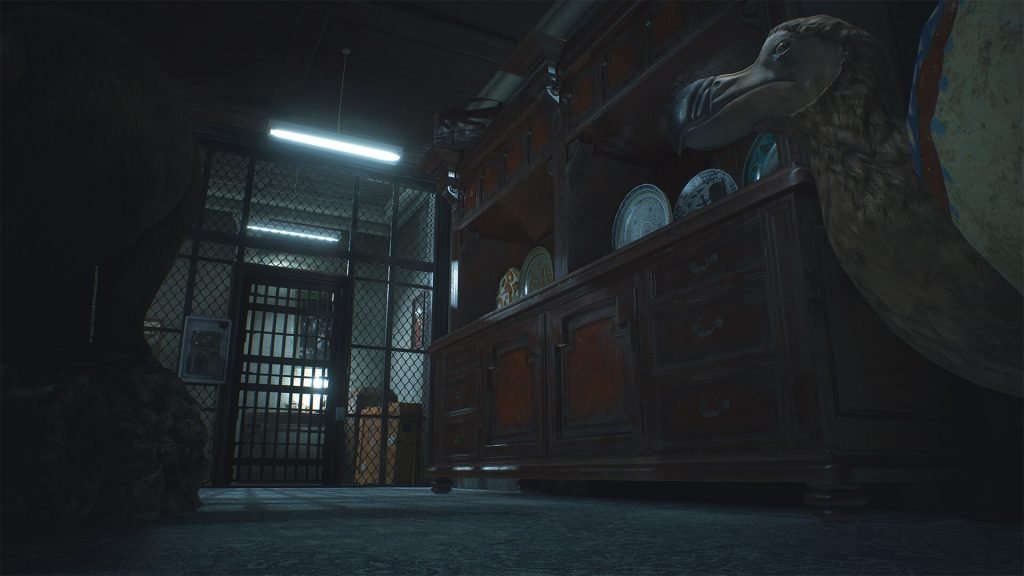
Incontrarible evidence of my suspicions come when we visit the orphanage later in the story, but for now, I took the time to take a look around the office and everything clicked. The hints littered through reports, the mystery of why the police station is in an art gallery, why the station fell, how there was so much death. It’s all cleverly wrapped up in this one room and with it, the beginning of a darker tale is unfolding. The Zombie survival trope seems to flare up and we get the first bitter taste of that terrible truth that was lurking beneath the ominous presence that permeates the setting: The most dangerous foe is never the zombies. No, the true monster is not the creature of instinct, it’s the humans and their selfish nature.” Before our encounter with Chief Irons left me thinking what an asshole, now I see him as the evil creature he truly is. The state of racoon city, is merely the result of the skin-deep corruption that had festered beneath the surface and allowed the tragedy to unfold. But I will touch on that later on.
Chief Irons office is a decadent room, untouched by the tragedy that has consumed the rest of the Police station. The undead have never encroached on this sanctum, thanks to the shutter and the locked doors that bar entry, but that does not mean it has been spared from death. Indeed, everywhere you look in this place, death and decadence stand hand in hand. The ominous overtures that played in the other areas are abolished by the gasping whine of classical music that infuses the dated decor with normality that reeks of being wrong. Beautiful art adorns the walls, and cabinets of the room and between it all, the preserved corpses of animals, that I assume are Chief Irons trophies. We find the tiger mentioned in the taxidermy report in an adjacent room, preserved and posed – it would have been an imposing figure in life, here, it looks little more than a mockery. Thankfully, these don’t appear to be reanimated by the G virus which has claimed most of the cities corpses. It is clear that Chief Irons is not only deranged but a lover of fine art, classical music and grotesque corpse displays. Is it any wonder that the station fell? But then I already know he had no part in holding it together, an operation report had noted his disappearance. I never did find a stuffed pig in that office, though I combed the place to look in the many times I hid there from the ominous steps of my stalking nemesis. It was in here that I began to understand why the Police Department ended up in a museum and why a lot of its artefacts were still there, in storage awaiting defilement from the outbreak and the denizens it spawned. It was all to stroke the ego of Chief Irons, to play into his interests and was most likely accomplished through his connections to Umbrella, and the corrupt corporate donations that bought Racoon city and ceded control from the established authorities to the corporate giant. Control that ultimately spelt its demise. I can’t help but draw parallels between Racoon city and London. Though thankfully, Zombie apocalypses remain in the realm of fiction.

As I press further through the narrative, though it is through different routes, both Leon and Claire enter the sewer, I know their final destination is Nest: Umbrella Corporations Research laboratory, both driven by different narrative beats. But ultimately for the same reason. It feels fitting that to reach Nest, one has to traipse through the refuse and rot in the sewers though I am certain it is unintentional, it give symbolic meaning to the corruption that had festered beneath racoon city. The sewers hold many secrets and some alarming truths. It seems Umbrella employed a private army, one whose bumbling resulted in pushed Doctor Birkin, creator of the G Virus to take drastic measures. Left shot and dying in his laboratory, he injected himself with the virus he had made. Knowing the consequences. Those infected with G are fated to lose their intelligence and become mindless killing machines. As the force that effectively killed him travel through the sewers with the majority of the G samples, Birkin, now transformed into what can only be described as a monster, murders them all. In the ensuing conflict, the briefcase containing the virus is breached and we see rats scurrying around the broken vials of G virus, Leon concludes that this is what caused the outbreak. A conclusion I am inclined to agree, though ultimately the cause is Birkin’s greed. It is he who bought and funded Chief Irons and paid him off to silence the investigation into the original outbreak in Resident Evil. It was his greed and insistence that G was his work and no one else would have it. His attempts to sell it to the American Military (yes that trope has arisen again) that ultimately put them on the path that cost so many their lives. Later when we encounter Annette Birkin, Williams wife, I cannot quite believe her when she says “we never meant for this to happen.” You can say that if you were trying to cure cancer, but not if you are researching bioweapons… but then who knows if that was the original source of the research. The game refuses to shed light on it, and frankly, it was never needed. For now, I trudge into the darkness, and there in its depths find what may have been the first victims, the sewer workers. There are more deadly foes in the inner depths. Putrid masses of flesh, which I assume were once human. These fleshy creatures are deadly but can be killed, if they don’t implant an egg in you first. There are many zombie corpses with exploded chests down here, someone seems to be inspired by Aliens. The area these corpses inhabit are in the deepest depths of the sewer, but something odd has happened here. Pulsating organ-like structures cover the surface and I came face to face with a number of putrid entrails that resembled a stomach and its intestines. I passed them by, grabbed a decent weapon as my prize and then fled back the way I came. There were no answers on what the pulsating masses were before, I wonder if they were the rats or perhaps one of the early victims. The truth is never uncovered. With the sewer picked clean of loot and its secrets, there is only one place for me to go. Nest – I should say from this point onwards, at the time of writing, I have only played through Leon’s narrative.
Stepping into Nest for the first time is a jarring experience. In the other areas visited so far, the technology has been on par with what was expected of the 1990’s. Nest though would fit nicely within any sci-fi with its elegant neon lights and it voiced computer system that reacts to your approach by reading a chip within your access band. The tragedy of the upper city is present here too. Nest Denizens are found huddled in corners, or trapped in sleeping bays – I do wonder at that one, how exactly did he die? His musings don’t provide any answers. We pass through a biological laboratory, the plants inside have gone wild, wild enough to ensnare unsuspected corpses and make them walk. These puppets can only be killed with fire and I am thankful for the flamethrower I relieved from the Sewer store. Interestingly, one of the lead researchers is pinned to the window. I soon learn a way to destroy the plant life, but question why the researchers didn’t. In the room where we mix a potent weed killer. I am drawn to a hunchbacked bloated corpse in the corner. I expect it to move, but this time, thankfully, it really is just a corpse. I move on and finally unlock the route forward, only to be found by my stalking nemesis. I run out of the zone and do not see him until the end sequence where I finally and gleefully dispatch him with an anti-tank missile launcher. The end is in sight, and I am finally reunited with Clare and a girl who looks familiar. The game is finished, or is it? the end seems pleasant as they escape on the train. But how do they get out of the city? This is a truth I will need to learn another time.
As I watched the ending sequence, I was enthralled by how well the game evokes tension, drama and wraps it around a mystery. Those who want to just go in and kill Zombies are in for a rough ride. This game punishes those who rush in guns blazing, those who run away are equally dammed. Sooner or later you will encounter the licker, who requires you to creep about or die. If you left those zombies alive earlier… and not inert, you might be in a spot of bother. Tactics are the name of the game, and surviving is wholly based on keeping your ammo count up and killing only those that are absolutely necessary.
I do have one gripe with the game, and its an inherited issue from the original: there is no canonical consistency. No matter which character you play, the narrative path remains the same, and while there are some deviations, i.e Claire retrieving a parking permit from Chief Irons, while Leon gets his from a prisoner who was so impactful I cannot remember his name, the overall plot follows the same path. There are some dialogue flavours that add to the intrigue or provide more context, such as Claire’s response to the supposed letter from Chris Redfield, her brother.
This does not sound like chris
while these comments add flavour to the individual scenarios, the discrepancy between them makes a coherent narrative impossible. How can both Claire and Leon fight the same bosses in the same locations? Open the same locked doors? discover the same secrets via the same means without contradicting the other? The truth is it can’t and the inclusion of both areas, with the same scenario only makes consistency impossible. I wonder how amazing it would be if each had their own part to play, their own areas to unlock and their own entry points. It would have been an amazing narrative if they could truly only survive by working in tandem. Claire unlocks some areas, which we find, open later on during a playthrough with Leon. We wouldn’t need to have them cross paths often, but when they did the payoff would be immense. While Mr X’s heavy steps are a forboding companion, this sort of narrative would lend itself the distant footsteps and closing doors. Things moving, that were not so before. Character specific bosses would be great, but more importantly, interaction between Claire and Leon. These would really build the sense of shared adventure that is currently lacking and serve to propel a great game to an exceptional one. These are, of course, pipeline dreams, but any game, no matter how well-received, can be improved.
Resident Evil 2: Remake is not only a marvel but a memorable one. packed full of terror, evocative storytelling and the most terrifying stalker I have ever encountered in a game. It is loyal to the original, while also recreating the motifs and evoking a sense of dread that permeates everything.
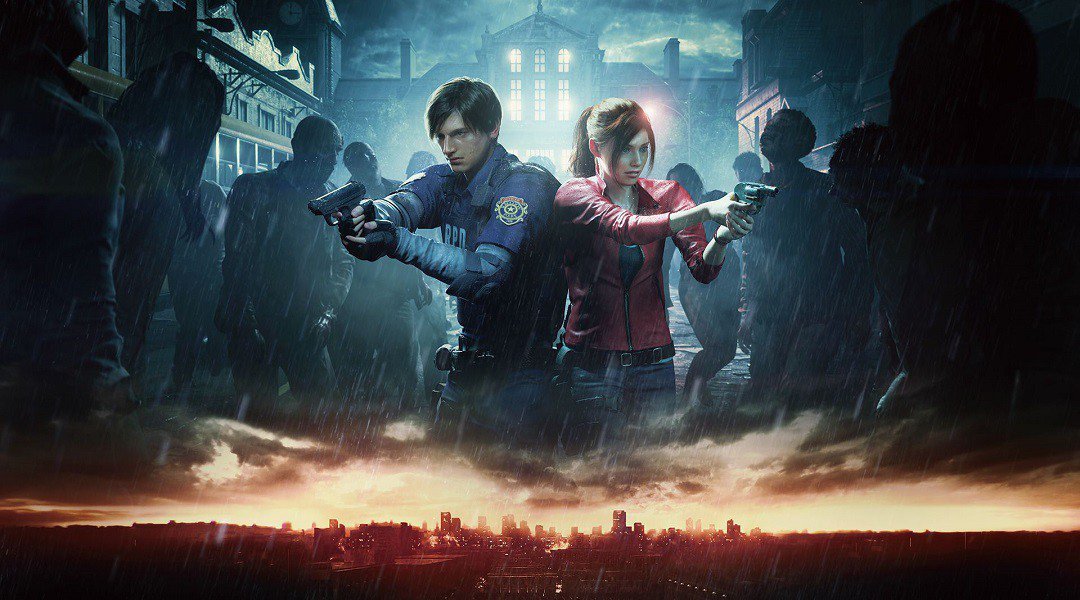


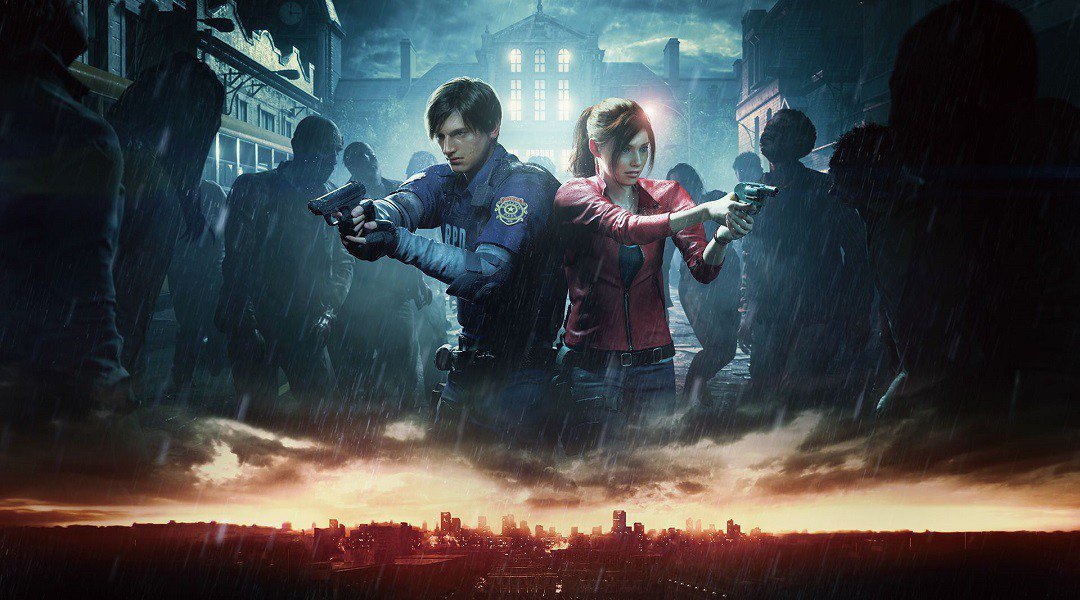
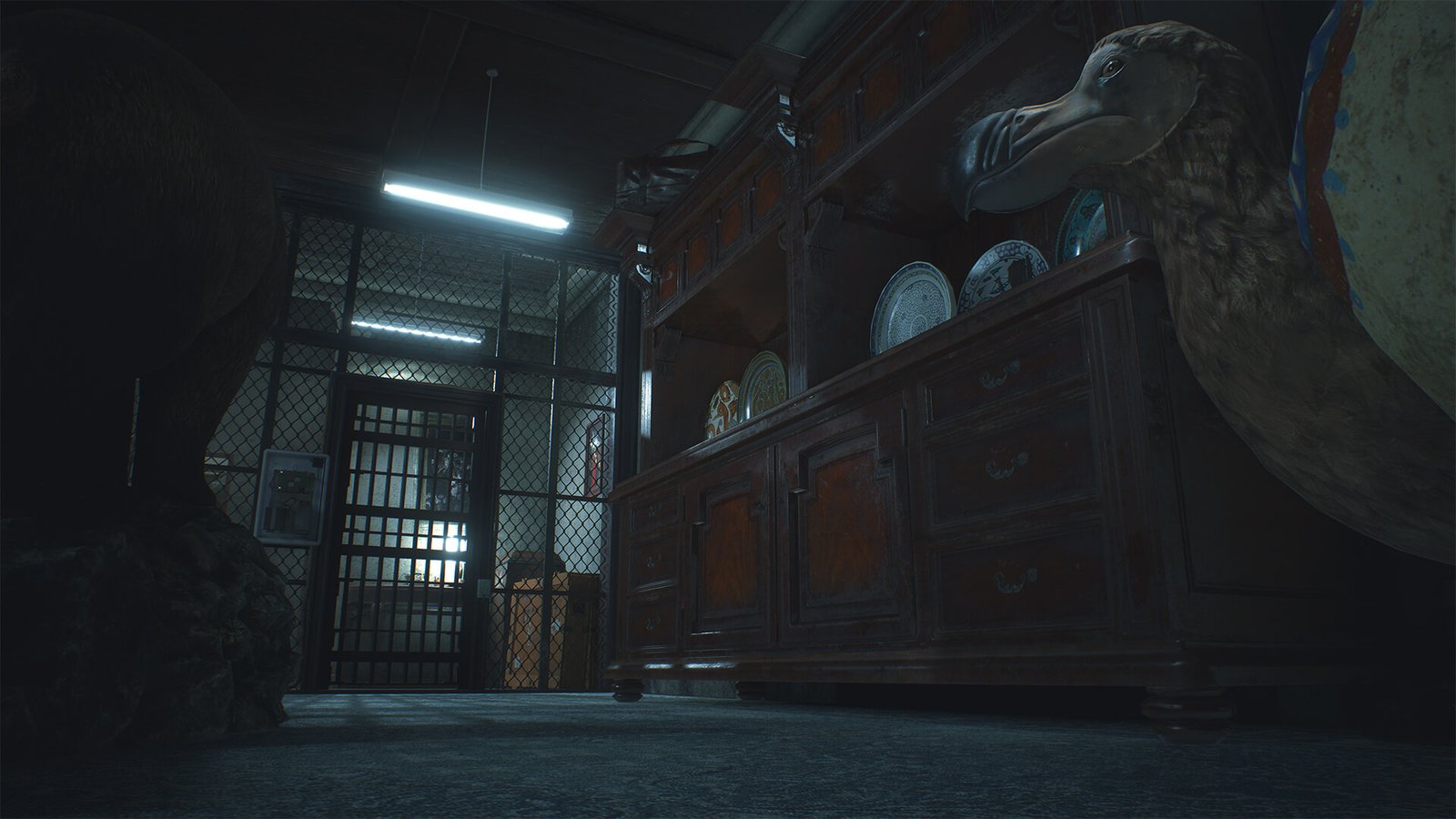

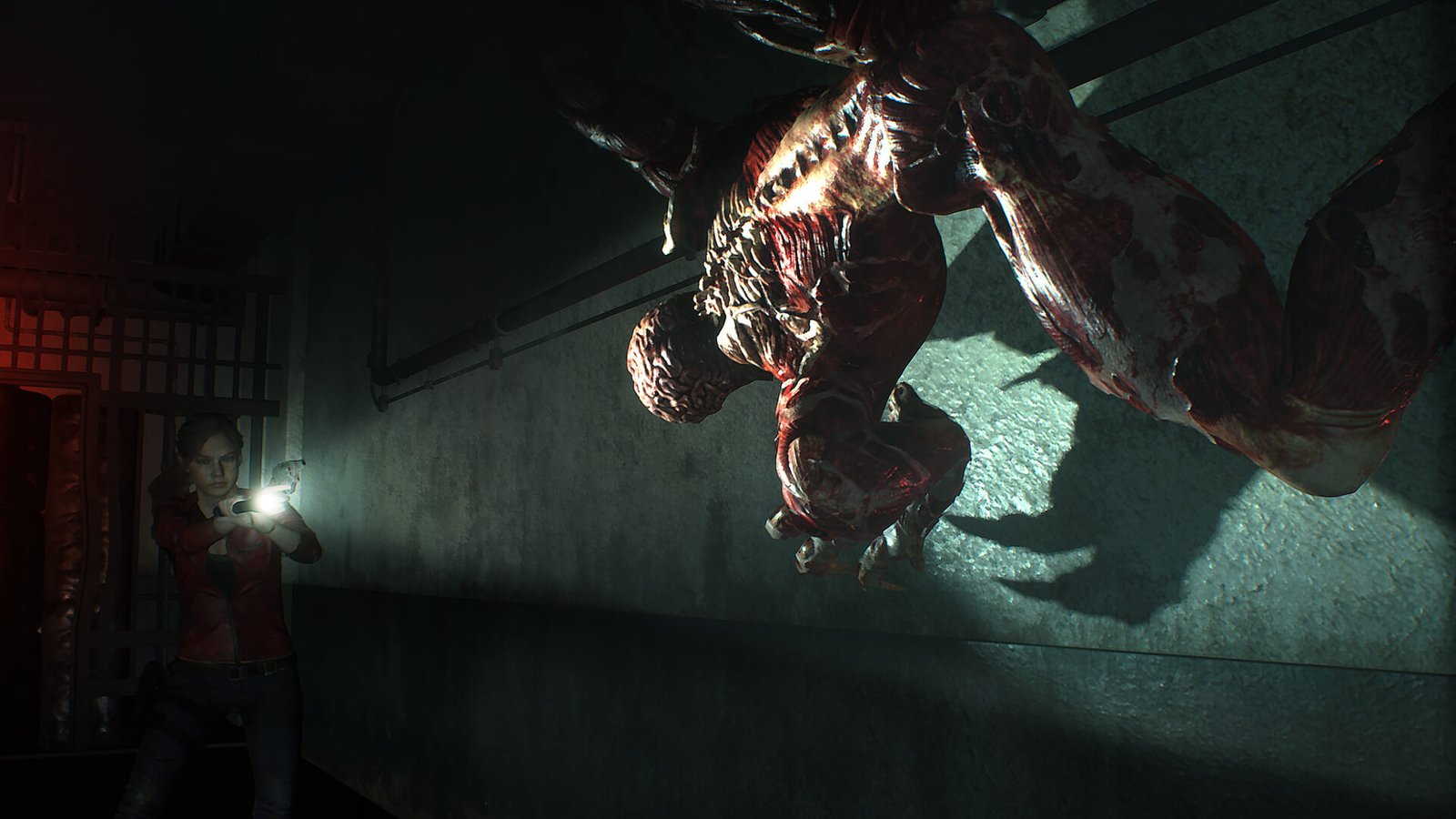

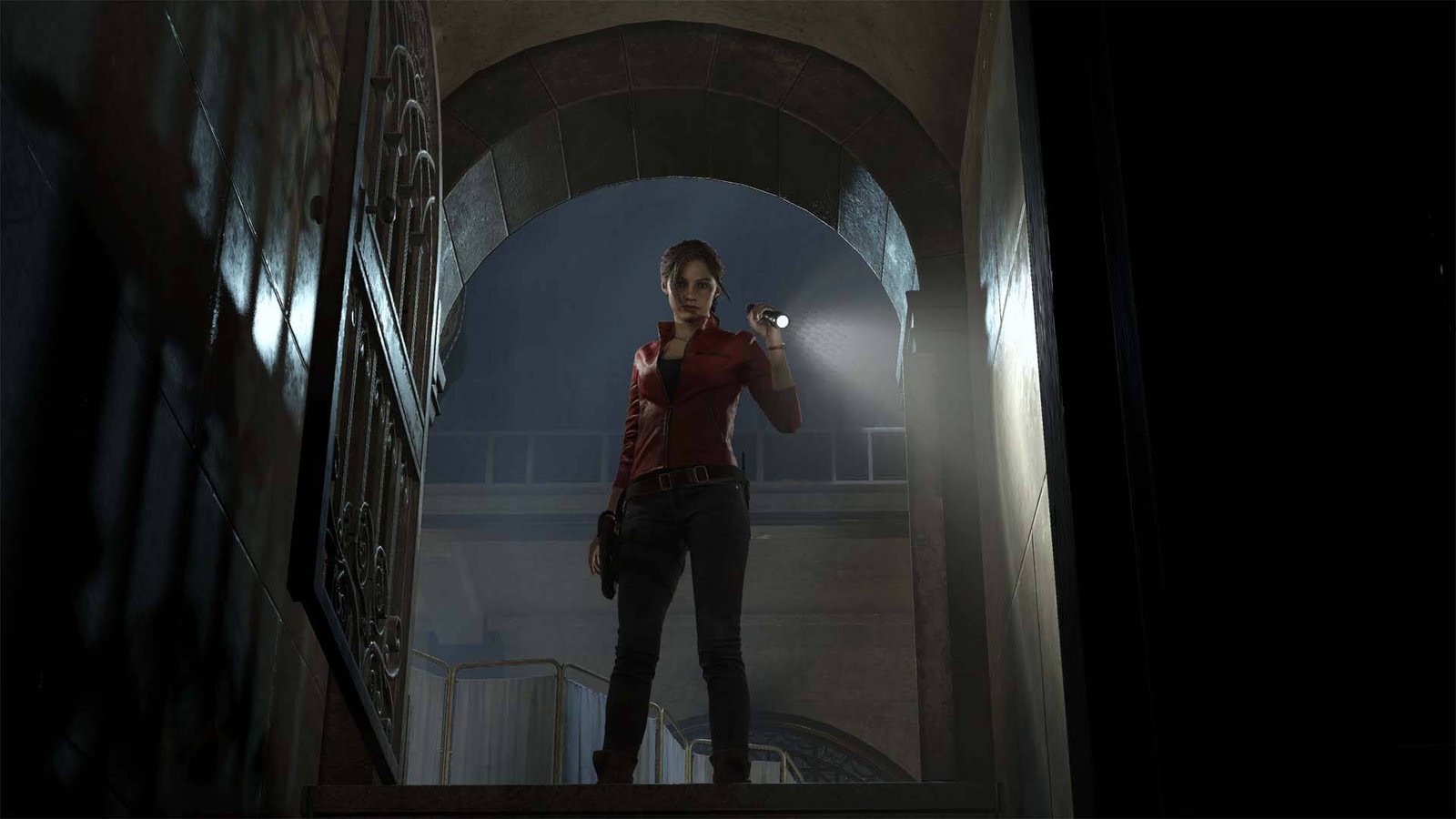


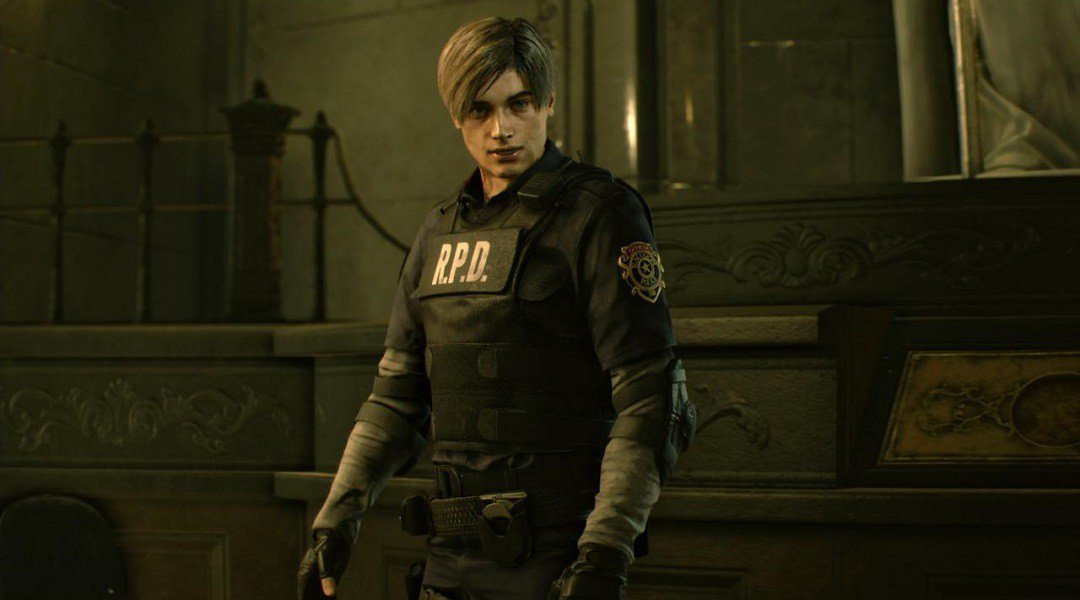

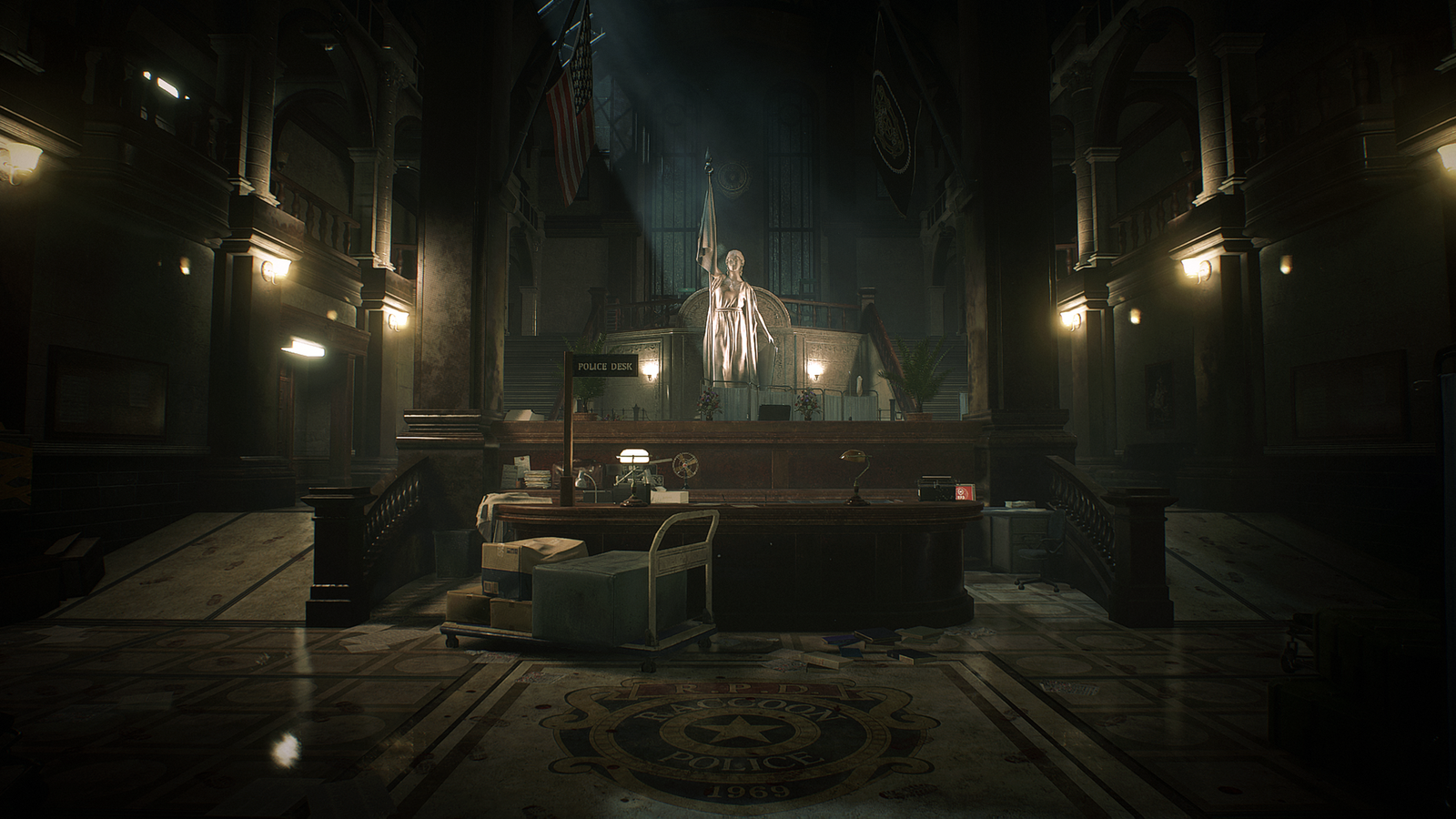



steven mepham
Pig is referring to Katherine Warren.